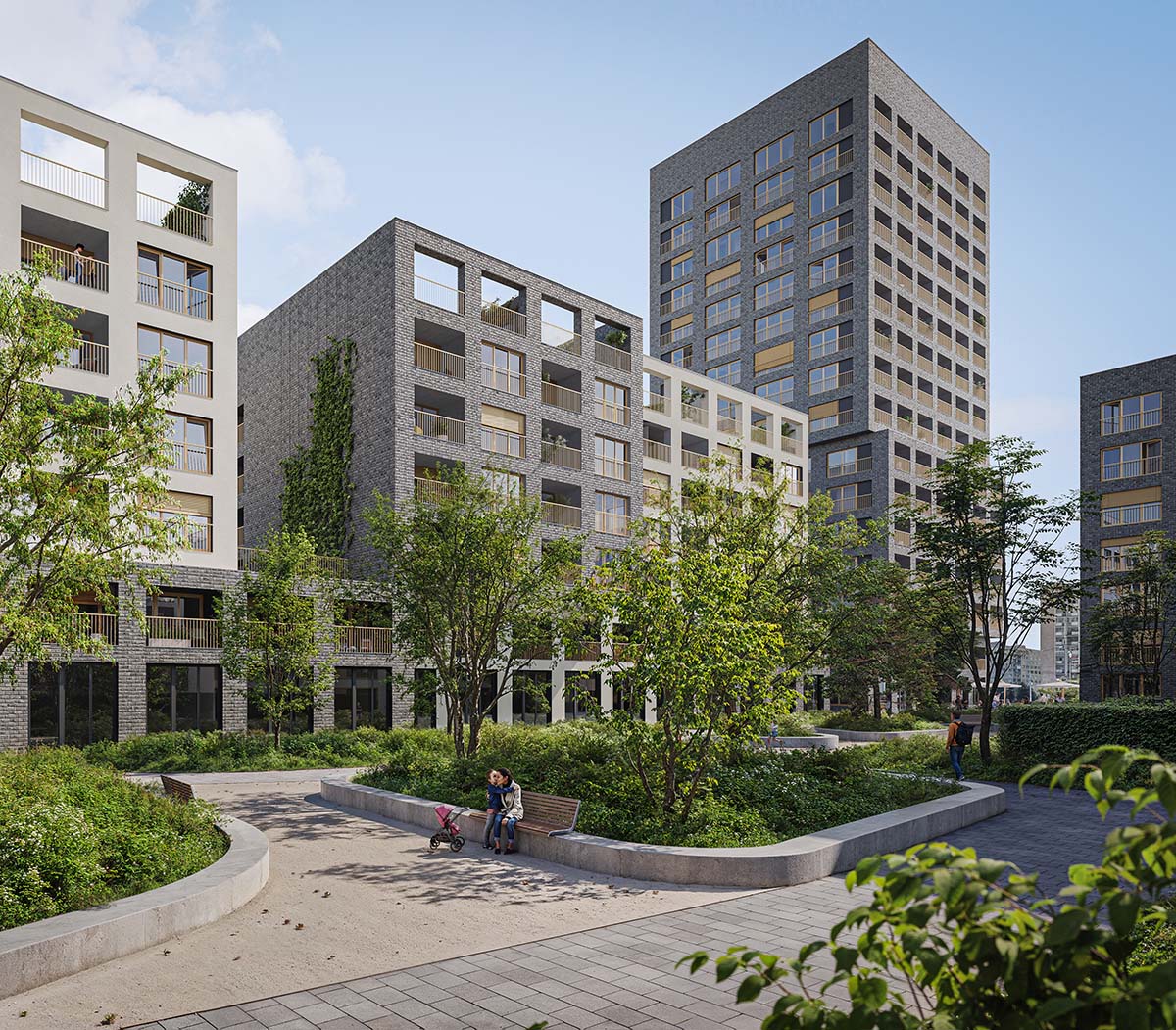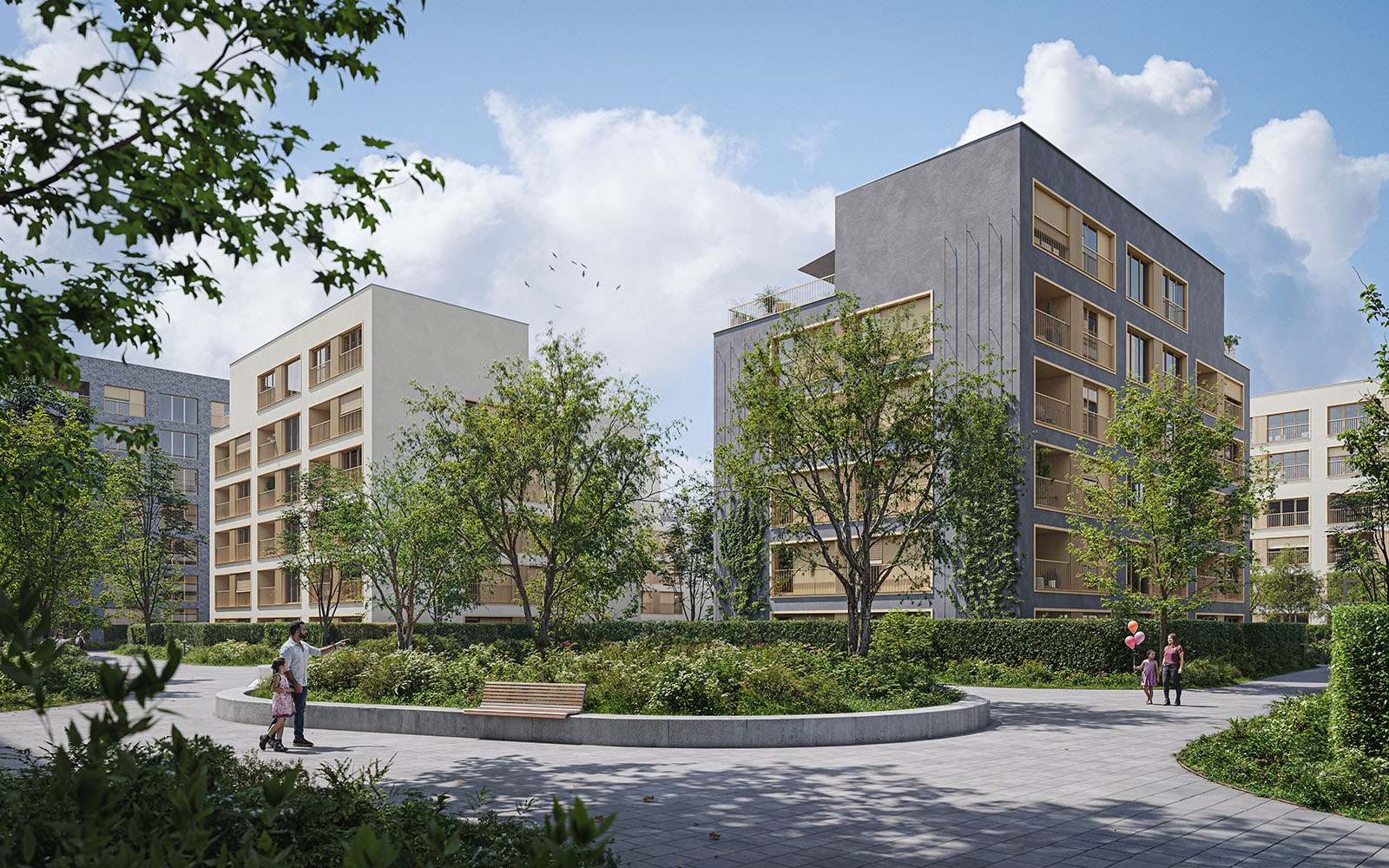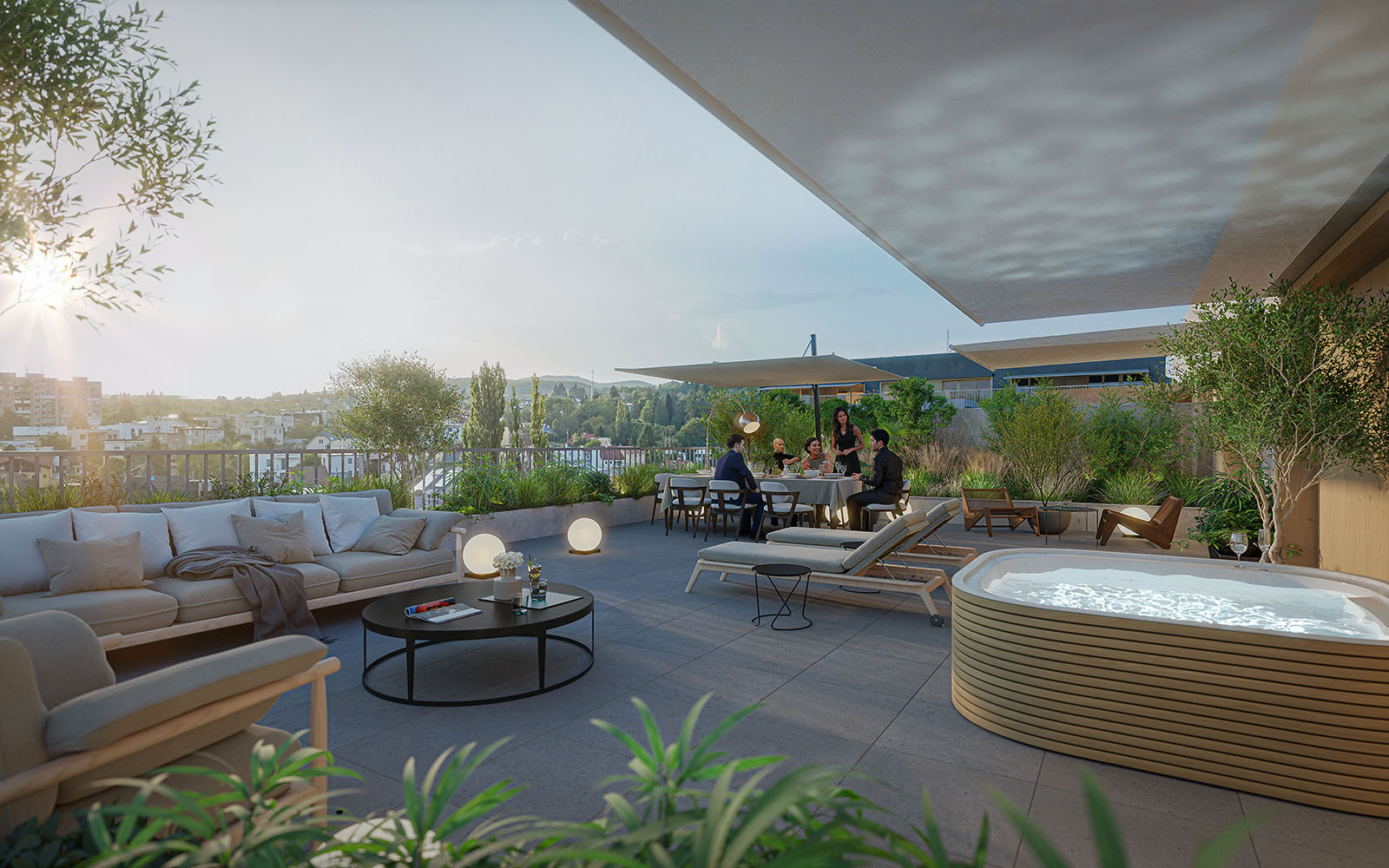WatsoNova not only meets the needs of today's residents, but also has future generations in mind.
By combining innovative building technologies and eco-friendly materials, we minimize the impact on the environment while offering comfortable and modern living. Be part of a community that cares about the future of our planet.
Watsonova Kosice
Key steps towards sustainability

Selected location
01
A heat island arises from dark, non-reflective surfaces and open parking areas. These elements absorb the sun's heat and increase the temperature in the city by up to 5.4°C. This can have a negative impact on inhabitatnts’ health and increase cooling costs. Our design solutions include modern green roofs, underground parking and highly reflective materials to help keep the temperature at a comfortable level to save the environment.
In our projects, we focus on revitalizing already developed sites, which protects valuable farmland and ecological areas. This process takes advantage of existing infrastructure and contributes to the revitalization of urban neighbourhoods. Our strategy is to minimise environmental impacts and encourage urban development where it makes sense.
For most people, the ideal walking distance is 400-800 meters. Increasing the density of residential and commercial buildings reduces car trips and air pollution by up to 30%. At WatsoNova, we promote a convenient and environmentally friendly way of life that saves time and the environment.
Charging is already available in 75% of parking spaces, significantly increasing user convenience. This infrastructure gives projects a head start in preparing for the growing share of electric vehicles.
Our site is strategically located close to public transport networks, which is convenient for young people, the elderly and those who don’t want to own a car. Investing in places with good public transport access not only saves land, it also contributes to the revitalization of urban areas and brings economic benefits.
At WatsoNova, we have also thought of cyclists. We offer a wide range of options for bike storage in the form of short-term or long-term parking. Cycling is not only a great way to prevent CO2 emissions, it also has a positive impact on your health. With bike paths in close proximity to our project, you will have easy access to all parts of the city.
When people have the opportunity to interact with the outdoors, their well-being and productivity improve. Open spaces also have many positive environmental benefits - creating habitats, connecting habitat corridors in urban areas, increasing stormwater infiltration and reducing the heat island effect. The project's open space concept supports environmental goals and provides open areas for social activity, green roofs increase green space areas and incorporate plants that offer visual stimulation throughout the year.
Construction activities can adversely affect indoor air quality if they release dust, toxic substances and other contaminants. These substances can cause health problems for both construction workers and future occupants. To prevent this, we will implement a mandatory indoor air quality (IAQ) control plan to protect residents from pollution and construction workers from toxins and dust. Installed HVAC equipment will operate efficiently longer with SMACNA's IAQ strategy, which prevents contaminants from entering building systems and protects materials from moisture damage.
Instead of just diverting rainwater, the designers of the WatsoNova project see it as a valuable resource. Our goal is to retain, reuse and filter rainwater, thereby restoring the hydrological functions of the native landscape and reducing the impact on surrounding water systems.
Our planting strategy emphasizes the use of native and drought-tolerant plants, which significantly reduces the need for irrigation and minimizes the consumption of potable water. Native plants also require less fertilizer and pesticides, improving water quality during runoff. High-efficiency irrigation systems using captured rainwater further eliminate the need for potable water for irrigation.
A huge amount of construction waste is generated in Europe every year. Our aim is to minimize this waste through efficient management and recycling. The general contractor and its subcontractors are committed to recycling or reusing at least 75% of construction waste. We also aim to reduce waste at the design stage of projects by using prefabricated components and standardized dimensions.
Sustainable construction means that we take care to protect the environment during construction and try to minimize negative impacts on the surrounding area. The general contractor follows a detailed plan that includes groundwater protection, contamination prevention, and prevention of erosion and pollution of surrounding roads. This approach allows us to protect natural resources and promote sustainable development.

Sustainable development and sustainable construction
02

Water and energy
03
Renewable energy generation reduces carbon dioxide emissions and improves local air quality by reducing pollution. Renewable energy generated on-site helps protect users from energy price fluctuations and grid dependence, while reducing energy losses in transmission. The WatsoNova project includes the installation of photovoltaic panels on many building roofs, which will be constructed in the first phase of construction, contributing to greater self-sufficiency and reducing demand for traditional energy production.
The consumption of drinking water in residential buildings, including the cost of heating it, is a large part of the cost of living. WatsoNova focuses on saving water by installing water-saving fittings that reduce potable water consumption by 50% while maintaining the same user experience. This move will not only significantly reduce water heating costs, it will also reduce potable water consumption overall.
The integrated design of the WatsoNova project emphasizes energy saving and increasing the efficiency of the building. It focuses on improving mechanical systems and uses smart operational strategies. Early in the project, an energy simulation will be carried out, taking into account various factors such as building insulation, solar protection, lighting and its control, sizing of key technical elements, use of renewable energy, passive cooling and consumption monitoring. This approach helps reduce operating costs, improve thermal comfort and provides a better access to daylight.
Advanced metering of energy consumption throughout the building, broken down by equipment group, allows administrators to monitor and analyze consumption over time. This allows them to effectively plan energy-saving measures that will help save energy throughout the building’s lifetime. Once these measures are in place, metering will show how much you’ve saved and help decide on further investments with a clearly calculated payback. This approach also provides valuable feedback that allows fine-tuning of the operational parameters to the current needs of the occupants.
WatsoNova is equipped with 3-metre long entry cleaning systems located at all main entrances to buildings and commercial units. These systems also include cleaning zones in the underground garages located in front of the elevator lobby entrances. This effectively traps dirt and improves indoor air quality.
Recycling waste is key to protecting the environment. In some developed countries paper, food, glass, metals and plastics - all recyclable - make up approximately 69% of municipal solid waste. WatsoNova has central collection sites for various types of recyclables, including paper, cardboard, aluminum containers, glass, plastic, electronic waste, and biowaste. This helps reduce waste removal costs and promotes the conversion of recyclable materials into new products.
The project focuses on the use of green chemistry, which means that we select products and materials free of persistent bioaccumulative and toxic chemicals (PBTs) and persistent organic pollutants (POPs). These substances, which are often found in building materials, can have serious health and environmental impacts. We select suppliers that provide complete documentation on their products and guarantee that they are free of these harmful substances.
Volatile organic compounds (VOCs) are chemicals that are released from paints and building materials into the air. Long-term exposure to high levels of VOCs can cause health problems such as asthma or even cancer. At WatsoNova, we only use materials that meet strict VOC emission standards or are labelled as non-emitting. Randomly selected units will be tested by an accredited laboratory prior to handover.
The underground garages are equipped with forced ventilation to keep the CO concentration at least 50% below the hygiene limit (50 ppm). The system also monitors the NOx level and automatically increases ventilation if it approaches the limit. This ventilation system is designed to keep air from the garage from flowing into access corridors and basements, contributing to a cleaner and healthier indoor environment.

Indoor environment
04